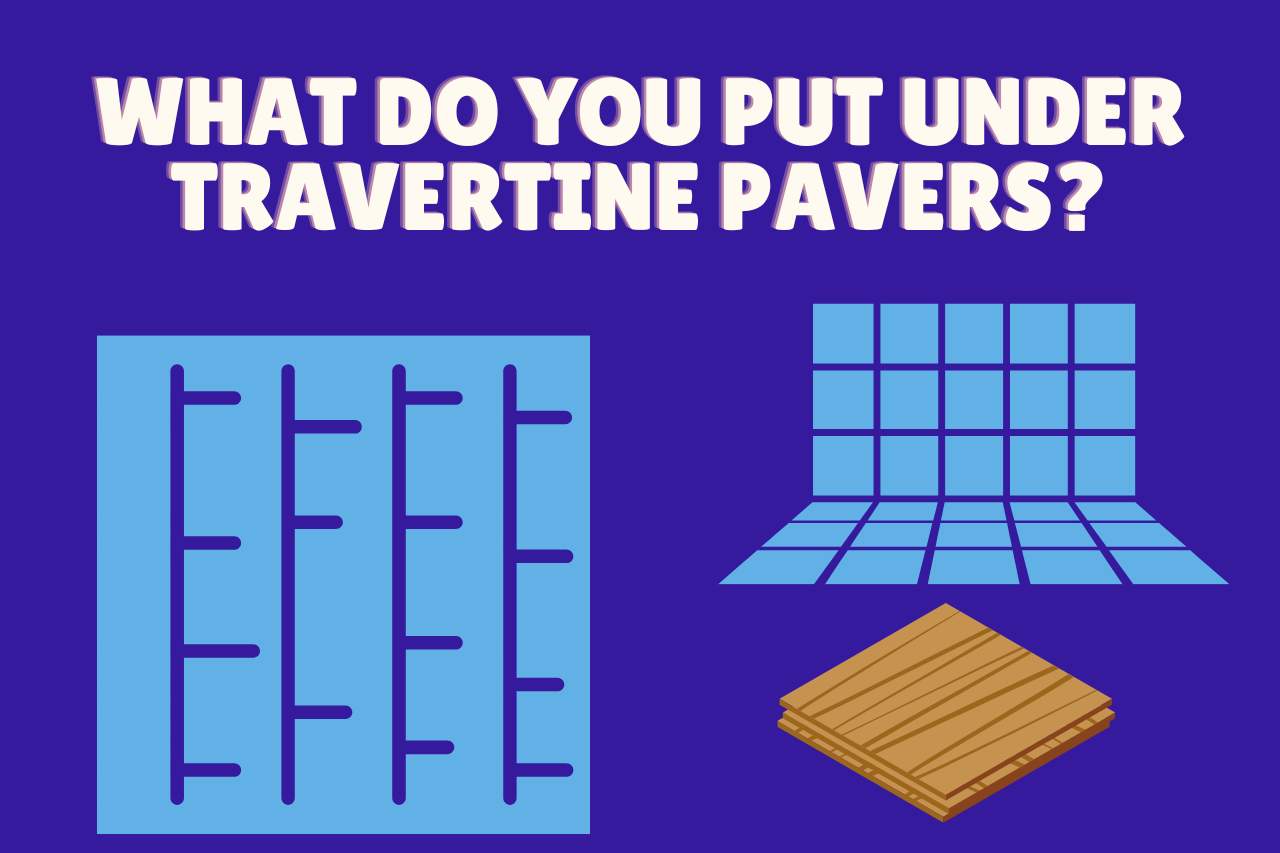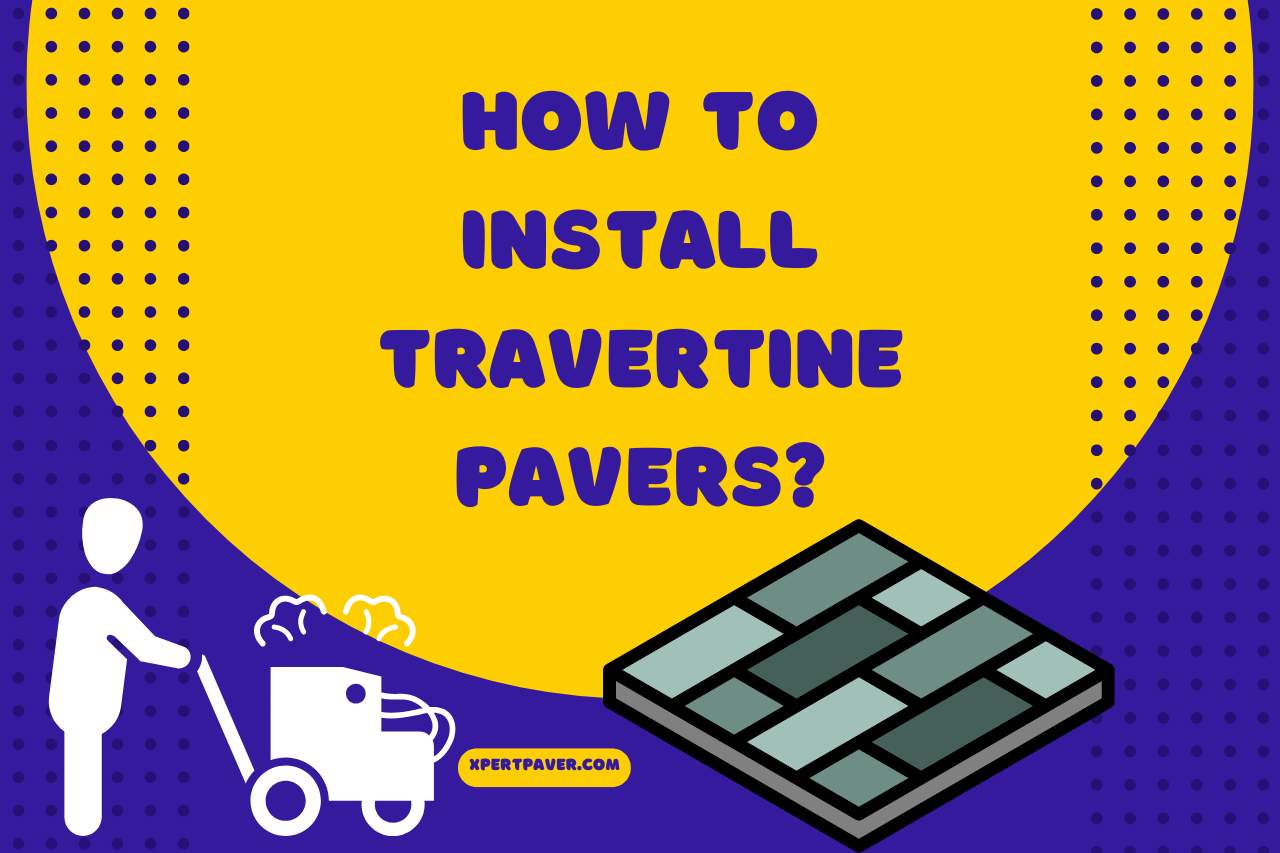Travertine pavers are made of natural stones with unique shapes and colors. As this looks very natural, travertine pavers are usually designed for outdoor pavings, which can create a beautiful original look. Because of this, the stone’s thickness can be used for outdoor areas like backyards, hallways, pool areas, and patios. Nowadays, travertine pavers are the most common landscape stone mainly because they are durable and thicker than ordinary tiles. Another advantage of travertine pavers is they can be arranged in any formation based on your needs. However, travertine pavers are a little harder to obtain, making them more expensive to install. In This article, we will see how to install travertine pavers.
How Do I Prepare the Area for Travertine Pavers Installation?
Preparing the area for travertine pavers installation is difficult due to the weight, making it a bit tough to work with. Nevertheless, follow the below step-by-step guide, which will be beneficial during installation.
First, you need equipment to prepare the area apart from travertine pavers. A shovel, rope, plate compactor, and measuring tape will make the installation easier and safer.
After that cleaning the area of debris and marking the installation area is essential. Travertine pavers can be installed on sand or concrete. However, you can install it using dry or mud set methods.
Clearing the area without trees, roots, flowers, or grass is important as the final project should be stable. You should compact your soil yet not be too dry or moist for this. After that, the gravel should be placed, ensuring proper drainage.
How Do I Install the Base for the Travertine Pavers?
The most important thing during the installation is laying down gravel. Before that, you must be sure of the border that you select.
You can use 6 or 8 gravels. Compacting gravel is also mandatory as compacting soil. Then the process of adding soil. About ½ sand should be added on top of the gravel. Here you can understand how essential is the base of the travertine pavers.
This directly affects the stableness of the travertine pavers. Crushing the gravel is an extra benefit because it allows water drainage.
How Do I Lay the Travertine Pavers?
Once you are compacting sand, you can start laying down travertine pavers. Laying travertine pavers has different options. You can use any of the methods according to your need.
If you are selecting French pattern travertine pavers, you must cut the travertine pavers according to your design. Moreover, growing grass is the most common issue related to travertine pavers.
Therefore, do not leave any space between travertine pavers. This will be beneficial in the future maintenance of travertine pavers.
Choosing suitable cement is also essential when laying travertine pavers. Many experts recommend using off-white color cement. Dark color cement can be seen through the travertine pavers. Starting from a corner to lay travertine pavers makes the process easier and neat.
Make sure to clean up the extra cement over the travertine pavers. Ensuring the level of the travertine pavers is also essential because they should be straight, which makes them stableness.
If you wish to use the brick and bond pattern, the second row of the pavers should start with a half-paver. If not, check your pattern with a string line to ensure you still lay the pavers straight.
How Do I Finish the Installation?
Finishing up the installation is also important as installing the base of the travertine pavers.
Once you have laid all the pavers, there must be some corners that need pavers to be cut and installed. To cut the pavers smoothly, wet down your pavers.
Then using a diamond blade saw, cut each of your pavers according to the design. This technique will add extra elegance to your final project.
After that, cleaning up the travertine paver and filling the joints is essential. Polymeric sand is better for filling up the gaps between pavers.
Make sure the surface has no sand; brushing the extra sand using a broom will make doing this easier. Then water the full area of travertine pavers to make the sand set. Doing this will not lead to stuck dirt and dust between the pavers.
As you can see, installing travertine pavers is very simple if you choose the correct technique. Before that, be aware of the method of installation that you are going to use.
What Do you Put Under Travertine Pavers?
This is a common problem during the installation of the travertine pavers. Usually, the recommended base is a mixture of sand and blue metal dust. After that, a layer of cement base. Choosing a suitable base for the travertine pavers is essential as it has a high risk of falling down the entire travertine paver. Therefore, getting advice from an expert is the best solution.

Also, using crushed limestone is accepted. This will make the base solid and allow proper water drainage. Also, using limestone will keep the travertine paver over time without shifting.
How Much Does It Cost to Travertine Pavers?
However, the general price of a travertine paver is about 5$ to 15$ per square foot. Anyway, this depends on the color you choose and the finish.
You could still buy some of the travertine pavers for under 3$. Also, the cost depends on the quality of the paver you buy.
Apart from this, the installation also costs a bit. Generally, a travertine paver installation costs about 3$ to 17$ per square foot.
This does not include the labor cost. Nevertheless, a common belief is that travertine pavers are more expensive than concrete pavers. It is because the travertine pavers are quite rare and made of natural stone.
How Long Do Travertine Pavers Last?
In general, the average life span of a concrete paver is approximately I to 3 years. As the travertine pavers are made out of natural resources, they are durable. Therefore, they last about 75 to 100 years.
Regular cleaning and proper maintenance are essential to keep your paver up at that time.
A major reason why travertine lasts that long is that travertine pavers do not crack easily. Even though they look soft, the stone is very strong.
Watch this video,
Video Credits – Armstone
Discover More: Related Articles You Can’t Miss
Shell Stone vs Travertine – Which is Better?
How to Grow Grass Between Pavers?



